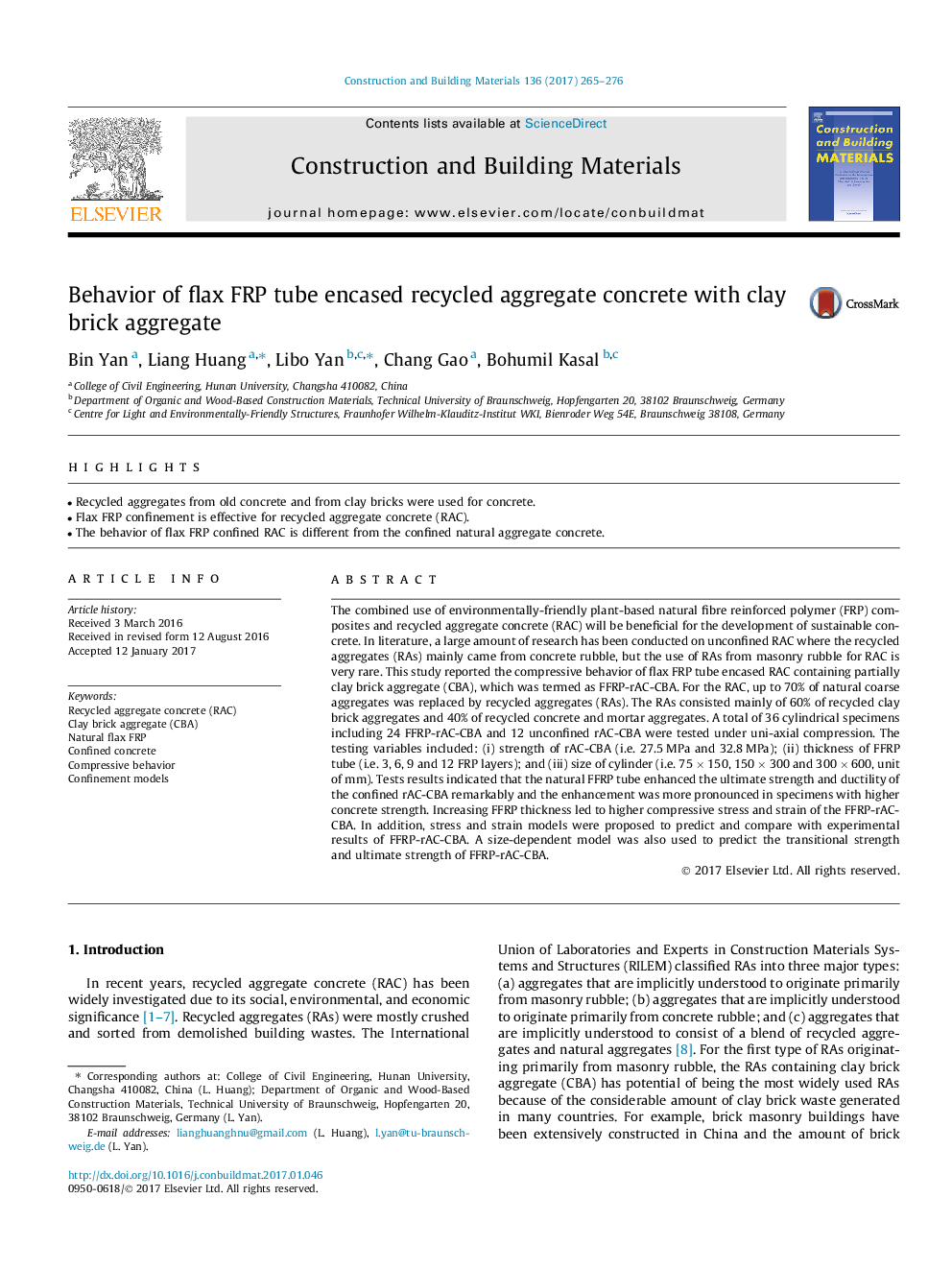| Article ID | Journal | Published Year | Pages | File Type |
|---|---|---|---|---|
| 4918541 | Construction and Building Materials | 2017 | 12 Pages |
Abstract
The combined use of environmentally-friendly plant-based natural fibre reinforced polymer (FRP) composites and recycled aggregate concrete (RAC) will be beneficial for the development of sustainable concrete. In literature, a large amount of research has been conducted on unconfined RAC where the recycled aggregates (RAs) mainly came from concrete rubble, but the use of RAs from masonry rubble for RAC is very rare. This study reported the compressive behavior of flax FRP tube encased RAC containing partially clay brick aggregate (CBA), which was termed as FFRP-rAC-CBA. For the RAC, up to 70% of natural coarse aggregates was replaced by recycled aggregates (RAs). The RAs consisted mainly of 60% of recycled clay brick aggregates and 40% of recycled concrete and mortar aggregates. A total of 36 cylindrical specimens including 24 FFRP-rAC-CBA and 12 unconfined rAC-CBA were tested under uni-axial compression. The testing variables included: (i) strength of rAC-CBA (i.e. 27.5Â MPa and 32.8Â MPa); (ii) thickness of FFRP tube (i.e. 3, 6, 9 and 12 FRP layers); and (iii) size of cylinder (i.e. 75Â ÃÂ 150, 150Â ÃÂ 300 and 300Â ÃÂ 600, unit of mm). Tests results indicated that the natural FFRP tube enhanced the ultimate strength and ductility of the confined rAC-CBA remarkably and the enhancement was more pronounced in specimens with higher concrete strength. Increasing FFRP thickness led to higher compressive stress and strain of the FFRP-rAC-CBA. In addition, stress and strain models were proposed to predict and compare with experimental results of FFRP-rAC-CBA. A size-dependent model was also used to predict the transitional strength and ultimate strength of FFRP-rAC-CBA.
Related Topics
Physical Sciences and Engineering
Engineering
Civil and Structural Engineering
Authors
Bin Yan, Liang Huang, Libo Yan, Chang Gao, Bohumil Kasal,
